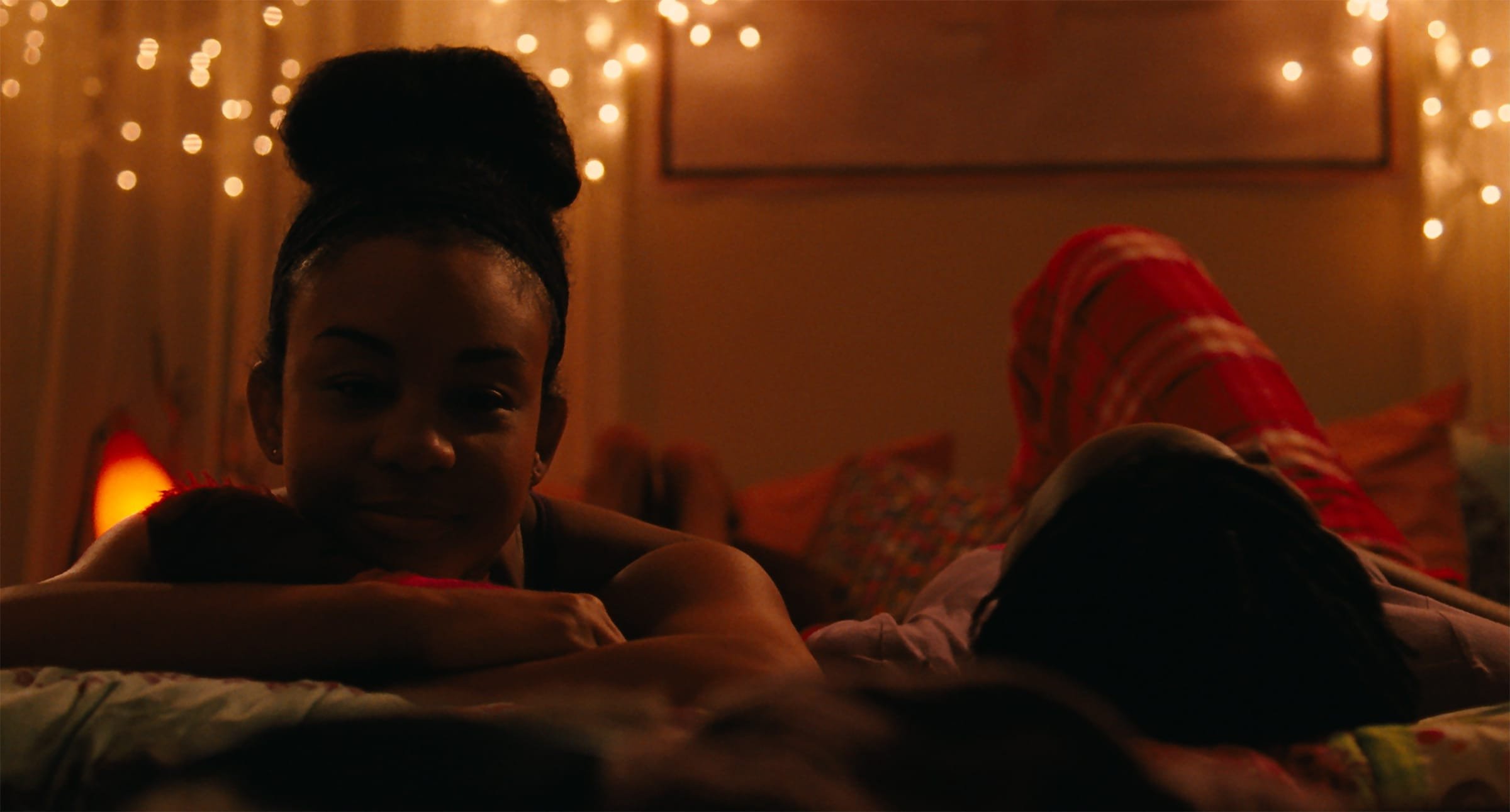Watching Her Watch: The Female Gaze in Pariah

To begin to understand the Female Gaze, a term popularized by Laura Mulvey in her essay “Visual Pleasure and Narrative Cinema”, is to first recognize that being a female writer or director does not inherently equate to producing work reflective of it. Engaging with the female gaze is not simply a matter of authorship, but an active, subversive, and starkly political choice. It often disrupts traditional story structures, narrative expectations, and the way intimacy is visualized and valued. To write from this gaze is to walk a delicate line: to create stories that adhere to a narrative structure while destabilizing the very foundations upon which much of visual storytelling has been built—especially in how conflict, particularly sexual conflict, is constructed.
Laura Mulvey, creator of the term “Female Gaze”
In Visual Pleasure and Narrative Cinema, Mulvey critiques the ways cinema has been historically shaped by the male gaze, which positions women as passive subjects of male desire. “In a world ordered by sexual imbalance,” she writes, “pleasure in looking has been split between active/male and passive/female.” This imbalance has seeped into storytelling conventions themselves: a screenwriting model in which conflict is central, resolution is delayed, and power dynamics (often gendered) are seen as necessary to drive tension, especially in romance or sex.
What the female gaze introduces — especially within queer stories — is the radical suggestion that narratives don’t require dominance, bartering, or shame to create tension. Instead of desire being predicated on power, it becomes something mutual, open-ended, and rooted in reciprocity rather than conquest. The female gaze seeks not only to alter the lens, but to dismantle the idea that intimacy must be earned through negotiation or withheld to maintain narrative momentum.
A film that embodies this radical shift is Dee Rees’s Pariah (2011). Following the story of Alike, a 17-year-old Black girl coming into her queerness in Brooklyn, the film avoids the traps of voyeuristic spectacle and instead immerses the audience in Alike’s emotional interiority. In doing so, Pariah reclaims agency over queer female desire, offering not a story of deviance or shame, but one of becoming.
A particularly telling moment comes early in the film, when Alike visits a lesbian club with her friend Laura, who, unlike Alike, is no longer closeted and has integrated herself in the surrounding queer community. The camera doesn’t linger on women’s bodies in a gratuitous or objectifying way. There’s no slow pan over tight dresses or sweaty skin, as often found in male-directed queer stories. Instead, Rees keeps the focus tight on Alike’s face. The viewer sees the club not through a detached voyeur’s gaze, but through Alike’s own: the nervous excitement, the awkwardness, the yearning. This choice subverts Mulvey’s observation that cinema is built on “looking at the female body as a spectacle.” In Pariah, the spectacle is not the body, it’s the act of feeling.
This refusal to indulge voyeurism, however, doesn’t mean that voyeurism is absent from the story. Rather, it’s reframed and recontextualized. Alike, like many queer teens, is often placed in the position of observer—watching others live the lives she yearns for, absorbing glimpses of freedom through stolen glances. In one scene, she watches a couple kiss on the bus with both longing and sadness. Here, the audience becomes complicit in her gaze, but not in the leering, objectifying sense. Instead, we feel the ache of being on the outside. This is a voyeurism of exclusion, not of dominance.
It’s precisely this kind of emotional spectatorship that rewires the traditional cinematic gaze. In Pariah, the viewer is asked not to consume Alike’s experiences but to sit inside them—to feel the discomfort of her silence at the dinner table, the sting of rejection from her mother, the tender hope in her poetry (which shares themes from one of my favorite poems, Mary Oliver’s lead). By the end, when she quietly but defiantly asserts, “I’m not running, I’m choosing.” We aren’t cheering for a character who’s finally knelt down to a narrative arc, we’re witnessing the emergence of a self-defined gaze, one not based on external validation but on emotional truth.
This stands in direct contrast to what Mulvey calls “scopophilia”, the pleasure derived from looking without being seen. Traditional cinema encourages this voyeuristic distance, where viewers can consume without consequence. But Pariah collapses that distance. It asks the viewer not just to look, but to understand what it means to be looked at while looking back. This isgaze acknowledges, reflects, and ultimately equalizes.
Alike at the lesbian club
This shift is particularly powerful in the context of queer storytelling. Much of queer cinema, especially under male direction, has historically been filtered through a lens that prioritizes trauma, conflict, or hypersexualization—often resigning queer characters into hosts of desire and shame. Pariah dares to suggest otherwise: that the simple act of honest, reciprocal seeing can be as narratively compelling as any bargain or compromise.
The female gaze doesn’t reject narrative tension; it redefines it. Rather than pitting characters against one another or placing one character's desire in opposition to another, it introduces tension through emotional vulnerability, misalignment, and growth. In Alike’s story, conflict arises not from seduction or betrayal but from the friction between internal truth and external expectation — a structure that allows for more nuanced, inclusive, and radical stories.
Through the lessons of Pariah and the insights of scholars like Mulvey, we find that female gaze is not about swapping object for subject, but about dismantling the scaffolding of objectification itself. It invites us to imagine desire as a two-way street: one built on consent, presence, and mutual recognition.


